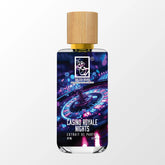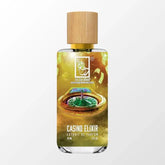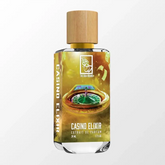Global Scents: A Journey Through Cultural Fragrance Traditions

In a world that often seems to be dominated by visuals and sounds, the sense of smell often takes a backseat. However, the role of fragrances in different cultures across the world is a rich and fascinating topic that sheds light on the diversity of human experiences. From ancient rituals to modern perfumery, scents play a significant role in shaping cultural identities and practices.
Let’s explore how cultural scent preferences vary from culture to culture, highlighting the olfactory tapestry that connects us all.
Ancient Egypt: Perfume of the Pharaohs
Our journey begins in the land of pyramids and pharaohs. Ancient Egypt is often credited with laying the foundation for traditional perfumery and influencing global fragrance trends. Perfumes, or Perfume in Latin, were used not only as cosmetic adornments but also as offerings to the gods and a symbol of social status. The scent of Lotus, Myrrh, and Frankincense filled the air, creating an olfactory ambiance that transcended earthly existence.
Here are some DUA recommendations based on these notes:
India: Aromatic Incense & Spiritual Connection
In India, fragrances have been intertwined with spirituality for centuries, reflecting traditional perfumery practices. The burning of incense sticks and aromatic herbs is a common practice during religious rituals and meditation, showcasing the scents across cultures. Scents like Sandalwood, Jasmine, and Rose not only please the senses but also foster a deep spiritual connection. The use of fragrant oils in traditional Ayurvedic medicine further underscores the therapeutic properties of fragrances.
Seeking fragrances to elevate your spirituality? Dive into these enchanting scents:
China: From Incense to Tea
China's aromatic history revolves around incense, but it extends beyond the spiritual realm and influences global fragrance trends. The Ming and Qing dynasties saw the rise of traditional Chinese perfumery, creating scents using natural ingredients such as Osmanthus and Chrysanthemum. Fragrance played a role not only in personal adornment but also in tea culture, where the aroma of tea leaves became an art form in itself, showcasing scents across cultures. The delicate fragrance of tea leaves and blossoms became symbols of refinement and elegance.
Indulge in these irresistible recommendations if you have a passion for the above mentioned notes:
Middle East: A Timeless Tradition
In the Middle East, fragrance is woven into the very fabric of daily life, reflecting cultural scent preferences. Oud, also known as Agarwood, is a prized fragrance that has deep roots in Arabian culture and influences global fragrance trends. The art of creating attar, or natural fragrances, has been perfected over centuries, and the scent of Roses, Jasmine, and Sandalwood is a common presence in Middle Eastern homes and mosques, highlighting scents across cultures.
Here are some famous DUA Oudh's that you should try:
Japan: Simplicity & Elegance in Scents
Japan, a culture known for its minimalist aesthetic, places a great emphasis on simple yet elegant fragrances, reflecting scents across cultures. The art of kodo, or incense appreciation, involves experiencing the subtlety of scents in a serene setting. Traditional Japanese incense uses ingredients like Agarwood, Aloeswood, and Sandalwood, which evoke a sense of tranquility and mindfulness.
Elevate your senses with these captivating fragrances for ultimate tranquility.
Isn’t it unbelievable how sense of smell connects us to a rich tapestry of human experiences, transcending borders and languages. So, when you come across a beautiful smell, take a moment to enjoy it because it might be like an invitation to learn about the history and traditions of different cultures. This can help you discover a mix of wonderful scents from different parts of the world!




